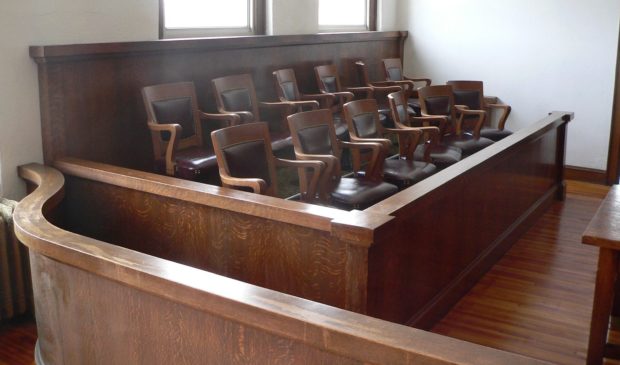Newsletter Signup
The Austin Monitor thanks its sponsors. Become one.
Most Popular Stories
- Austin’s airport is getting a new concourse and 20 more gates but not until the 2030s
- New rules in the works for electric vehicle charging stations
- Judge rules city can’t use taxpayer money for South Central TIRZ
- Budget deficit looms over city this year and beyond
- Save Our Springs Alliance sues City Council over Open Meetings Act
-
Discover News By District

Despite law intended to ensure diversity, Travis County grand juries less racially diverse
Monday, November 14, 2016 by Audrey McGlinchy, KUT
In the year since Texas lawmakers mandated random selection of grand jurors in place of the controversial “key man” system, grand juries in Travis County have become less racially diverse.
“The grand juries are to be selected at random from a fair cross section of the population of the area served by the court,” said state Sen. John Whitmire (D-Houston), laying out one portion of HB 2150 to his colleagues in May 2015. The bill went into effect Sept. 1, 2015, making Texas the last state to abandon the system.
“It will address diversity, transparency,” said Whitmire.
The key man system relied on judge-appointed commissioners to assemble a group of prospective grand jurors. The judge then whittled this body down to 12. Grand juries in Texas hear all felony charges and are tasked with determining whether there is enough evidence for an indictment.
But here in Travis County, racial diversity among grand jurors has taken a hit with random selection.
In the year before the key man system fell outside the law, 60 percent of grand jurors in Travis County were white, while 22 percent were Hispanic, 18 percent black and almost 1 percent “other.” In the year since judges have begun employing random selection, grand juries have become whiter: 69 percent white, 17 percent Hispanic, 8 percent black and 6 percent “other.”
A spokesperson from Travis County was not available to comment before deadline.
And though one of the intentions of the HB 2150 was certainly racial diversity, said Rep. Carol Alvarado (D-Houston), who authored parts of the bill, the major concern was untangling a system of nepotism.
“The intention was to get rid of a very old system that looked like it played favoritism,” said Alvarado. Houston Chronicle reporter Lisa Falkenberg documented the consequences of this “favoritism” in Harris County, depicting a “cozy, pick-a-pal grand jury system stocked with police- and prosecution-friendly elites.”
When told that racial diversity in Travis County grand juries has declined since random selection, Alvarado said judges in the county seemed to avoid favoritism in choosing commissioners and jurors, instead making an effort to seat more racially diverse grand juries. Alvarado insisted that other Texas counties will experience a swing toward racial diversity with this legislation.
Mary Rose, associate professor of sociology at the University of Texas, echoed Alvarado. “It is possible that Travis County was doing a better job in the past with their key man system,” said Rose. “It is possible that Travis County knew how to mobilize networks in a way that brought a fairer cross section of people into the room.”
But while Travis County grand juries are now less racially diverse than before, they better reflect the community – or the idea of a “jury of one’s peers.” According to the latest census data, Travis County is 68 percent white, 28 percent Hispanic or Latino and 9 percent black. That is, indeed, what HB 2150 intended: “The grand jurors and the alternate grand jurors shall be randomly selected from a fair cross section of the population of the area served by the court,” reads the legislation.
UT professor Jennifer Laurin said the decline in racial diversity to better reflect a community raises an interesting question.
“Is the idea of representativeness really that the ideal is that the jury matches the community?” asked Laurin. “Or is the ideal that the jury be diverse by some independent measure?”
This story was produced as part of the Austin Monitor’s reporting partnership with KUT. Photo by Ammodramus (Own work) [CC0], via Wikimedia Commons.
Audio from McGlinchy’s KUT story is posted below:
The Monitor’s work is made possible by donations from the community. Though our reporting covers donors from time to time, we are careful to keep business and editorial efforts separate while maintaining transparency. A complete list of donors is available here, and our code of ethics is explained here.
You're a community leader
And we’re honored you look to us for serious, in-depth news. You know a strong community needs local and dedicated watchdog reporting. We’re here for you and that won’t change. Now will you take the powerful next step and support our nonprofit news organization?









